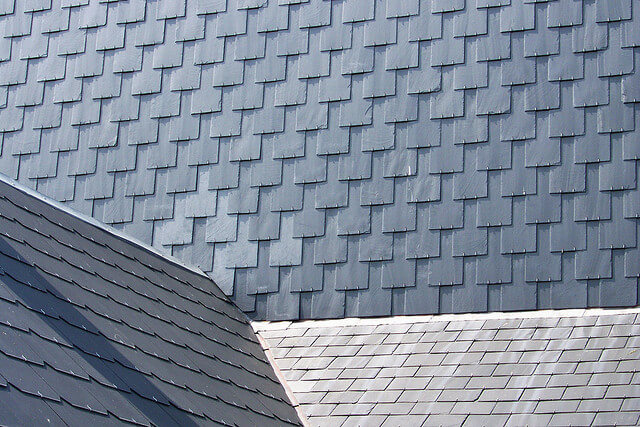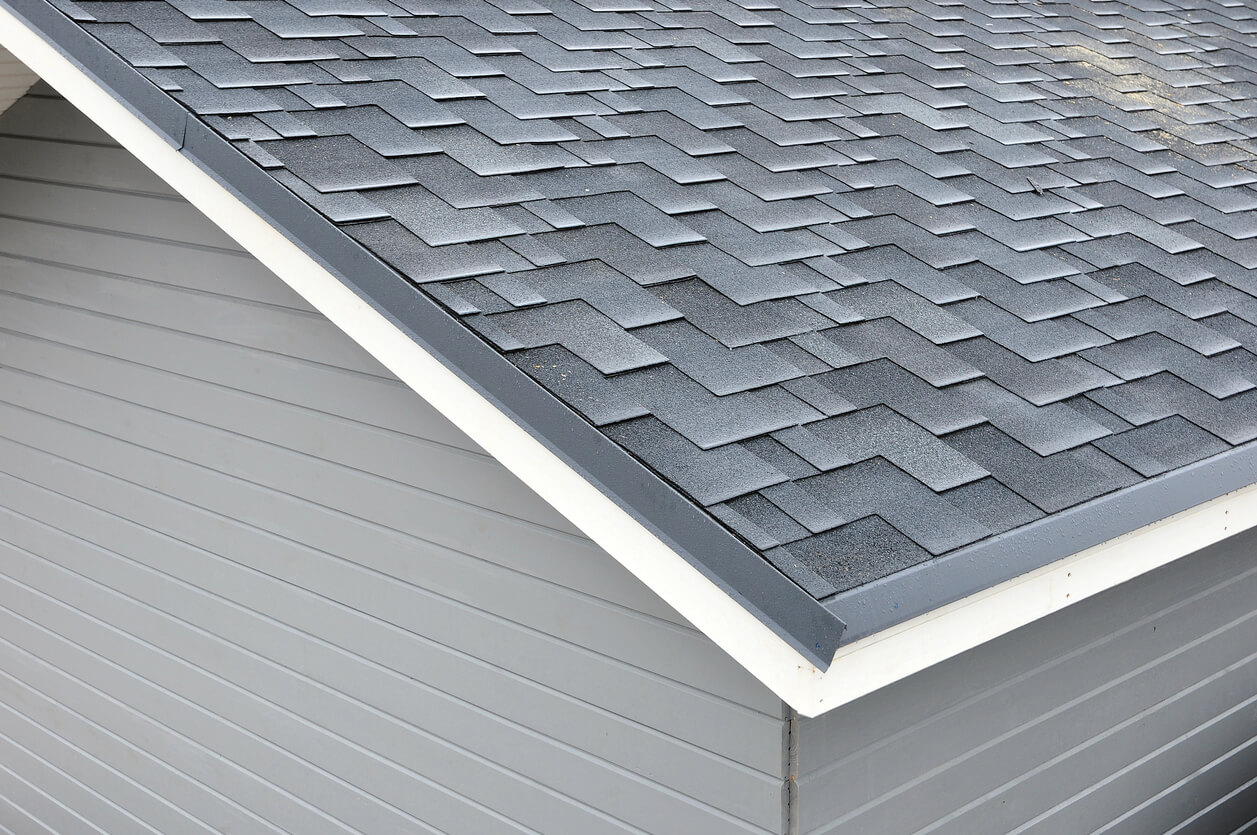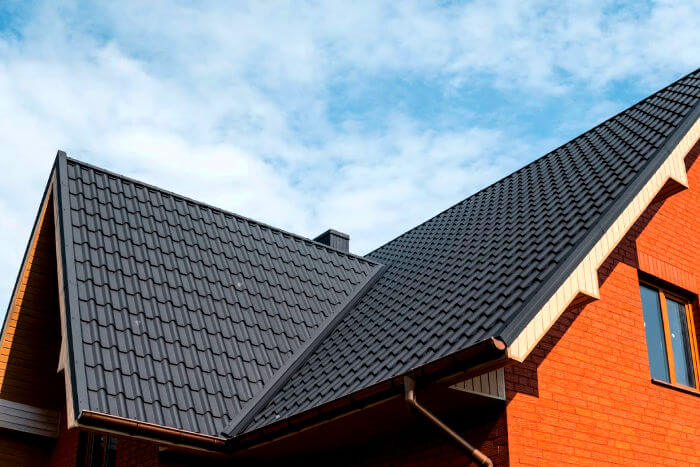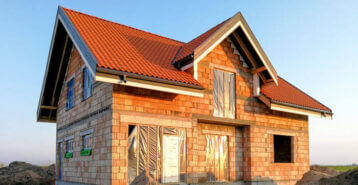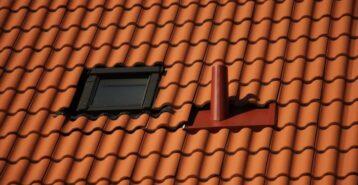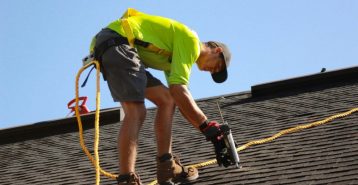Average Cost of Slate Roof Tiles
Slate roofing has been valued for its natural beauty, durability, and long lifespan for centuries. It’s made of thin, flat pieces of stone, often from quarries in places known for quality slate, like Vermont, Pennsylvania, and Spain. Each tile is unique, with different colors, textures, and patterns that add charm and elegance to your home’s exterior.
As of 2025, the average cost to install slate roofing is $8 to $35 per square foot, including materials and labor. That’s about $16,000 to $70,000 for a 2,000-square-foot roof. Your total roofing replacement cost depends on things like labor rates in your area, roof size and slope, and how complex the roof is.
Cost of Slate Roof by Type
There are three main types of slate roof tiles: natural, hybrid, and synthetic. All are made to look like slate but differ in materials, durability, and price.
| Type of Material | Average Installed Cost by Sq. Ft. | Estimated Cost for 2500 Sq. Ft. Roof |
|---|---|---|
| Synthetic Slate | $8 to $15 | $20,000 to $37,500 |
| Hybrid Slate | $14 to $23 | $35,000 to $57,500 |
| Natural Slate | $20 to $35 | $50,000 to $87,500 |
Natural Slate
Natural slate is the most durable and expensive option. It’s made entirely of slate and can last up to 200 years. On average, natural slate roof tiles cost between $20 and $35 per square foot to install, or $50,000 to $87,500 for a 2,500-square-foot roof.
Hybrid Slate
Hybrid slate roof tiles are made of a mix of synthetic and natural materials, with a synthetic core and slate overlay. On average, hybrid slate costs $14 to $23 per square foot, or $35,000 to $57,500 for a 2,500-square-foot roof.
Synthetic Slate
Synthetic slate tiles are made from materials like plastic, metal, or asphalt. They’re the most affordable but also the least durable. On average, expect to pay between $8 and $15 per square foot for synthetic slate tiles, or $20,000 to $37,500 for a $2,500-square-foot roof.
Slate Tile Roof Cost by Roof Size
Slate roofs tend to be more expensive than other roof types, ranging from $8 to $35 per square foot on average, and your roof’s size is the biggest factor in determining the cost.
| Roof Size | Estimated Cost Range |
|---|---|
| 1,000 square feet | $8,000 to $35,000 |
| 2,000 square feet | $16,000 to $70,000 |
| 3,000 square feet | $24,000 to $105,000 |
Other Cost Factors
Several other factors can impact the final price of a slate roof installation, such as:
- Labor Rates: Slate roofing requires specialized skills, which means labor can be more expensive compared to other roofing types. In areas where skilled slate roofers are harder to find, rates may be even higher.
- Underlayment: This layer sits between the roof deck and the slate tiles and plays a key role in waterproofing. Premium underlayment materials, like synthetic options or ice and water shields, can improve performance but add to your total cost.
- Roof Slope and Shape: Steeper roofs require more safety equipment and take longer to work on. If your roof has many valleys, dormers, or other complex features, expect higher installation costs due to the additional labor and materials required.
- Structural Reinforcement: Natural slate is extremely heavy. If your home wasn’t originally built to support this type of material, you may need to reinforce the roof framing. This structural work can significantly increase your overall project cost.
- Geographic Location: Where you live affects both labor and material prices. If slate tiles have to be shipped long distances, or if local building codes require additional installation steps, your costs may rise.
- Removal of Old Roofing: If your current roof needs to be removed before installing the new one, this will add labor and disposal fees to your final bill.
Slate Tile Roofing Replacement vs. Repair
Slate roofs are built to last, but even the most durable materials need maintenance over time. Whether you repair or replace depends on the age of your roof, the extent of the damage, and your long-term goals.
When to Replace
If your slate roof is nearing the end of its lifespan — typically around 100 to 150 years — or has widespread damage, a full replacement might be the better investment. Signs you may need a full replacement include:
- Sagging or structural issues
- Large sections of missing or damaged slate
- Persistent leaks or moisture problems
- Improper installation from the original build
A full slate roof replacement can range from $50,000 to $105,000 for an average 2,500 to 3,000-square-foot roof, depending on the type of slate, your roof’s complexity, and local labor rates. While the upfront cost is high, the longevity and minimal maintenance requirements often make it worthwhile in the long run.
When to Repair
If your slate roof is in overall good shape and the issues are limited to just a few tiles or small sections, a repair is likely the more cost-effective option. Repairs are appropriate when:
- Only a few tiles are cracked, broken, or missing
- Flashing is deteriorating or loose
- There are minor leaks in isolated areas
Professional slate roof repairs usually cost between $300 and $1,000, depending on the complexity of the job. Keep in mind that finding matching slate can be a challenge, especially for older roofs or rare tile types.
For the best outcome, it’s a good idea to schedule a full inspection with a roofing contractor who specializes in slate. They’ll assess the condition of your roof and help you decide if a targeted repair or a full replacement is the right move.
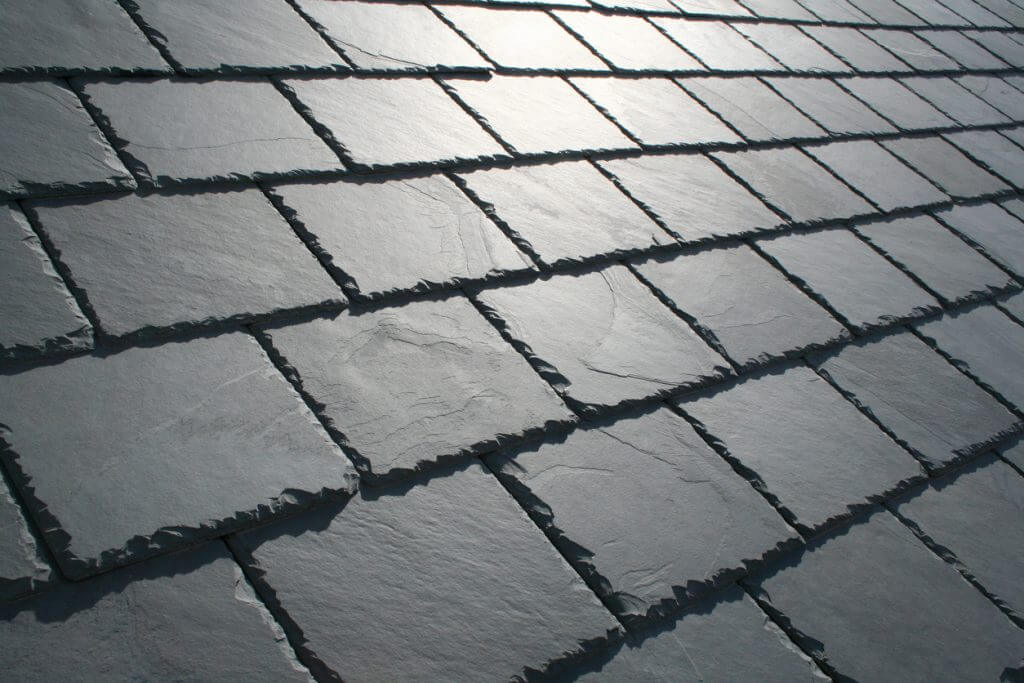
Benefits of Slate Roofing
There are five main reasons to consider slate roofs as you consider a roof replacement:
- Durability
- Longevity
- Beauty
- Energy efficiency
- Recyclability
Let’s take a closer look at each of those components below.
Durability
Slate roofs are very durable. They can handle harsh weather like heavy rain, snow, wind, hail, and fire. Slate absorbs little water and resists temperature changes, which prevents issues like warping, cracking, or fading. This makes slate a good choice for all climates, especially those with extreme seasonal weather.
Longevity
A well-installed and maintained slate roof can last over a hundred years. It often lasts much longer than other roofing materials. This long lifespan means homeowners save money because they don’t need to replace their roofs frequently.
Aesthetic Appeal
Slate has a natural beauty and comes in many colors and textures. This allows homeowners to create unique and attractive roofs that enhance their property’s curb appeal. Slate is available in shades like gray, black, green, purple, and red, which can suit different architectural styles.
Energy Efficiency
Slate roofs provide natural insulation, which helps keep your home at a comfortable temperature. This can lower your energy bills by reducing the need for heating and cooling. You can improve energy savings by:
- Installing Radiant Heat Barriers. These barriers, which are thin layers of metal, can reduce heat transfer into your attic by up to 95% when placed under your roof.
- Installing Rainwater Catch Systems. By setting up cisterns or drums during roof installation, you can collect rainwater for landscaping, helping to lower your water bills.
Choosing a slate roof not only helps save money but also reduces your environmental impact. Slate is a natural material that does not release toxic substances into the environment.
Easily Recycled
When it’s time to remove a slate roof, often more than a century later, the tiles can usually be reused or recycled. This is an eco-friendly option compared to asphalt shingles, which make up over 5% of landfill waste in the U.S. Choosing slate helps reduce waste and supports a more sustainable roofing solution.
Alternatives to Slate Roofs
If the price tag of slate is out of your budget, you have some alternatives to consider:
Slate Shingles vs Asphalt Shingles
Slate is fireproof, weather-resistant, and incredibly long-lasting (up to 150 years). However, it’s heavy and costly. Asphalt shingles, the most common roofing option in the U.S., are more affordable but only last 15 to 30 years.
Synthetic Slate
Synthetic or faux slate (as mentioned above) mimics the look of real stone at a lower cost. It’s lighter, easier to install, and offers some of the same aesthetic benefits.
Stone Coated Metal Shingles
Stone-coated metal shingles look like slate but perform like metal. They can last 30 years or more and stand up to harsh weather, including hail and wildfires. They’re also lightweight and help lower energy and maintenance costs.
The Bottom Line
Slate roofs are beautiful, durable, and energy-efficient, but they’re also among the most expensive options. If it’s within your budget, slate offers a low-maintenance, long-lasting roof that adds value and reduces energy use.
Get at least three quotes from local roofers to compare prices and find out if slate is the best fit for your home. Make sure any contractor you hire has experience working with slate.
Modernize can help by connecting you with up to four trusted local contractors. Click below to get started.


